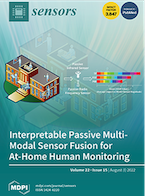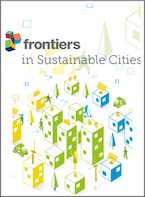Resultats de la cerca67 resultats
-

Is safety in the eye of the beholder? Discrepancies between self-reported and proxied data on road safety behaviors-A systematic review
Sergio Useche, Mireia Faus, Francisco Alonso
(2022). ArticleFrontiers in Psychology. Num.13:964387
Recent studies have problematized on the lack of agreement between self-reported and proxied data in the field of road safety-related behaviors. Overall, and although these studies are still scarce, most of them suggest that the way we perceive our own road behavior is systematically different from the perspective from which we perceive others' behavior, and vice versa. The aim of this review paper was to target the number and type of studies that have researched the behavioral perceptions of different groups of road users, contrasting self-reported behavioral data with those reported by other users (proxied), and their outcomes. This systematic review followed the PRISMA methodology, which...
Recent studies have problematized on the lack of agreement between self-reported and proxied data in the field of road safety-related behaviors. Overall, and although these studies are still scarce, most of them suggest that the way we perceive our own road behavior is systematically different from the perspective from which we perceive others' behavior, and vice versa. The aim of this review paper was to target the number and type of studies that have researched the behavioral perceptions of different groups of road users, contrasting self-reported behavioral data with those reported by other users (proxied), and their outcomes. This systematic review followed the PRISMA methodology, which allows for the identification of relevant articles based on the research term. A total number of 222 indexed articles were filtered, and a final selection of 19 articles directly addressing the issue was obtained. Search strategies were developed and conducted in MEDLINE, WOS, Scopus and APA databases. It is remarkable how road users perceive themselves as behaviorally “safer” than the rest of road users in what concerns the knowledge of traffic norms and their on-road performance. In addition, and regardless of the type of user used as a source, self-reported data suggest their perceived likelihood to suffer a traffic crash is lesser if compared to any other user. On the other hand, proxied reports tend to undervalue third users' performance, and to perceive riskier behaviors and crash-related risks among them. The outputs of this systematic review support the idea that the perception of road users' behavior and its related risks substantially differ according to the source. It is also necessary to increase the number, coverage and rigor of studies on this matter, perhaps through complementary and mixed measures, in order to properly understand and face the bias on road users' risk-related behaviors.
Llegir més Ocultar DOI: 10.3389/fpsyg.2022.964387ISSN: 1664-1078 -

A Case Study on Vestibular Sensations in Driving Simulators
José V. Riera, Sergio Casas, Francisco Alonso, Marcos Fernández
(2022). ArticleSensors. Num.22(15):5837
Motion platforms have been used in simulators of all types for several decades. Since it is impossible to reproduce the accelerations of a vehicle without limitations through a physically limited system (platform), it is common to use washout filters and motion cueing algorithms (MCA) to select which accelerations are reproduced and which are not. Despite the time that has passed since their development, most of these algorithms still use the classical washout algorithm. In the use of these MCAs, there is always information that is lost and, if that information is important for the purpose of the simulator (the training simulators), the result obtained by the users of that simulator will...
Motion platforms have been used in simulators of all types for several decades. Since it is impossible to reproduce the accelerations of a vehicle without limitations through a physically limited system (platform), it is common to use washout filters and motion cueing algorithms (MCA) to select which accelerations are reproduced and which are not. Despite the time that has passed since their development, most of these algorithms still use the classical washout algorithm. In the use of these MCAs, there is always information that is lost and, if that information is important for the purpose of the simulator (the training simulators), the result obtained by the users of that simulator will not be satisfactory. This paper shows a case study where a BMW 325Xi AUT fitted with a sensor, recorded the accelerations produced in all degrees of freedom (DOF) during several runs, and data have been introduced in mathematical simulation software (washout + kinematics + actuator simulation) of a 6DOF motion platform. The input to the system has been qualitatively compared with the output, observing that most of the simulation adequately reflects the input to the system. Still, there are three events where the accelerations are lost. These events are considered by experts to be of vital importance for the outcome of a learning process in the simulator to be adequate.
Llegir més Ocultar DOI: 10.3390/s22155837ISSN: 1424-8220 -

Assessing users’ perceptions of four types of road safety measures
Francisco Alonso, Sergio Useche, Mireia Faus, Cristina Esteban
(2022). ArticleTransport Problems. Num.17(2):137-150
Road crashes remain an important public health issue. This study aimed to assess the perceived importance of four types of measures for reducing traffic crash rates. For this cross-sectional study, data were obtained from a national sample of 1,200 Spanish drivers responding to a telephone-assisted survey. The most valued types of road safety measures were those related to users’ training/education and infrastructural improvements. Further, individual perceptions were influenced by both demographic and trip-related factors. The results of this study support the idea that user features remain a relevant issue to consider when developing and implementing road safety measures.
DOI: 10.20858/tp.2022.17.2.12ISSN: 2300-861X -

Unsafety on two wheels, or social prejudice? Proxying behavioral reports on bicycle and e-scooter riding safety – A mixed-methods study
Sergio Useche, Steve O'Hern, Adela Gonzalez-Marin, Javier Gene-Morales, Francisco Alonso, Amanda N. Stephens
(2022). ArticleTransportation Research Part F. Num.89:168-182
The use of non-motorized transportation and micro-mobility is increasing in many cities. Bicycle riding and e-scooter use are now more common and affordable than ever. However, users of these devices face certain key issues. These include their own risky behaviors as well as involvement in conflicts with other road users. Self-report data may not adequately capture these behaviors and interactions. Despite this, more objective data (i.e., how third parties perceive these users’ road behaviors) is scarce. Aims: This study aimed to understand whether e-scooter riders have comparable or different riding behaviors than cyclists. This was investigated using a mixed-method study. Methods: This...
The use of non-motorized transportation and micro-mobility is increasing in many cities. Bicycle riding and e-scooter use are now more common and affordable than ever. However, users of these devices face certain key issues. These include their own risky behaviors as well as involvement in conflicts with other road users. Self-report data may not adequately capture these behaviors and interactions. Despite this, more objective data (i.e., how third parties perceive these users’ road behaviors) is scarce. Aims: This study aimed to understand whether e-scooter riders have comparable or different riding behaviors than cyclists. This was investigated using a mixed-method study. Methods: This paper is divided into two sub-studies. In Study 1, 950 Spanish non-cyclists and non-e-scooter riders (mean age 31.98 ± 13.27 years; 55.3% female) provided external ratings (proxies) regarding the perceived behaviors of bicycle and e-scooter riders. In Study 2, collective Rapid Assessment Processes (RAPs; n = 23) were used to develop qualitative configurations of some of the key risky behaviors highlighted in Study 1. Results: There were significant differences in the perceived errors and violations rated by proxies for both types of riders (with e-scooter riders perceived as having higher rates of risky behaviors). However, there were also structural differences in the effects of external raters’ risk perceptions, traffic rule knowledge, and traffic incidents with two-wheeled riders on how they rated the behaviors. Conclusion: The results of both studies suggest that external raters’ perceptions provide further understanding of the causes, dynamics, and conflicts related to road behaviors performed by certain groups of road users. This is particularly apparent when there is no clear legislation and information on safe riding in urban areas. In this sense, improving infrastructure could promote safer interactions. Finally, road safety education could focus on promoting safer practices and interactions in order to improve how others perceive riders’ behavior.
Llegir més Ocultar DOI: 10.1016/j.trf.2022.06.015ISSN: 1873-5517 -

Differences in the Assessment of Safe and Risky Driving Behaviors: Pedestrians Versus Drivers
Francisco Alonso, Cristina Esteban, Mireia Faus, Sergio Useche
(2022). ArticleSAGE Open. Num.12(2)
Interactions between pedestrians and drivers are an important traffic safety issue. Psycho-social factors such as thoughts, perceptions and attitudes toward other people can be reliable predictors of riskier or safer behaviors among road users. The aim of this study was to assess how frequently participants perceive that drivers perform safe and risky road behaviors through drivers’ self-reported behavior and pedestrians and other drivers’ external perceptions. The results show that pedestrians assess the road behaviors of drivers in a seriously negative way. Meanwhile, drivers perceive their own behaviors as more appropriate than those performed by the rest of drivers. Women attribute more...
Interactions between pedestrians and drivers are an important traffic safety issue. Psycho-social factors such as thoughts, perceptions and attitudes toward other people can be reliable predictors of riskier or safer behaviors among road users. The aim of this study was to assess how frequently participants perceive that drivers perform safe and risky road behaviors through drivers’ self-reported behavior and pedestrians and other drivers’ external perceptions. The results show that pedestrians assess the road behaviors of drivers in a seriously negative way. Meanwhile, drivers perceive their own behaviors as more appropriate than those performed by the rest of drivers. Women attribute more favorable assessments to other users’ road behavior. Similarly, older drivers do the same, and consider themselves “safer” users. On the contrary, younger drivers report a higher frequency of self-rated unsafe behaviors. The study highlights the importance of working on the awareness of self-rated road behaviors. Road safety interventions and programs in Spain must consider the differences related to gender and age.
Llegir més Ocultar DOI: 10.1177/21582440221102444ISSN: 2158-2440 -

Environmentally friendly, but behaviorally complex? A systematic review of e-scooter riders’ psychosocial risk features
Sergio Useche, Adela Gonzalez-Marin, Mireia Faus, Francisco Alonso
(2022). ArticlePLoS ONE. Num.17(5): e0268960
Introduction E-scooters have made a place for themselves on urban roads as an affordable, easy-to-use and environmentally friendly method of transportation. However, and partly because of their road behaviors and safety outcomes, e-scooter users have started to represent a focus of attention for transport planners and policymakers. Aim The present systematic review aims to target and analyze the existing studies investigating the psychosocial characteristics of e-scooter riders, focusing on their behavioral and risk-related features. Methods For this systematic review, the PRISMA methodology was used, which allows for the selection of suitable papers based on the study topic, in...
Introduction E-scooters have made a place for themselves on urban roads as an affordable, easy-to-use and environmentally friendly method of transportation. However, and partly because of their road behaviors and safety outcomes, e-scooter users have started to represent a focus of attention for transport planners and policymakers. Aim The present systematic review aims to target and analyze the existing studies investigating the psychosocial characteristics of e-scooter riders, focusing on their behavioral and risk-related features. Methods For this systematic review, the PRISMA methodology was used, which allows for the selection of suitable papers based on the study topic, in accordance with a set of pre-defined criteria and a search algorithm. A total of 417 indexed articles were filtered, resulting in only 32 eligible original articles directly addressing the issue. WOS, Scopus, NCBI, Google Scholar, and APA databases were used to create and test search techniques. Results At the literature level, most of the existing studies are distributed in a few regions of the globe. At the user’s level, results show how e-scooters are most commonly used by young, highly educated, urban-dwelling males, usually for short trips. In regard to road behavior, individuals with the lowest degrees of risk perception remain more prone to engaging in risky road behaviors likely to increase their crash involvement. This might be worsened by the lack of normative e-scooter regulations (and their enforcement) in many countries, plus the marked absence of road training processes. As common limitations, it can be mentioned that 87.5% of these studies used self-report methods, while 59.4% had local coverage. Conclusions The findings of this systematic review endorse the growing need to develop and enforce traffic laws and training processes for e-scooter users. In addition, road safety education and training programs are highlighted by existing studies as potentially pertinent alternatives to increase risk perception, and reduce risky behaviors, road conflicts and crash likelihood among e-scooter riders.
Llegir més Ocultar DOI: 10.1371/journal.pone.0268960ISSN: 1932-6203 -

Could Technology and Intelligent Transport Systems Help Improve Mobility in an Emerging Country? Challenges, Opportunities, Gaps and Other Evidence from the Caribbean
Francisco Alonso, Mireia Faus, Maria T. Tormo, Sergio Useche
(2022). ArticleApplied Sciences. Num.12:4759
Apart from constituting a topic of high relevance for transport planners and policymakers, support technologies for traffic have the potential to bring significant benefits to mobility. In addition, there are groups of “high potential” users, such as young adults, who constitute an essential part of the current market. Notwithstanding, and especially in low and middle-income countries (LMICs), their knowledge and acceptance remain understudied. This study aimed to assess the appraisal of intelligent transport systems (ITS) and other technological developments applicable to mobility among Dominican young adults. Methods: In this study, we used the data gathered from 1414 Dominicans aged...
Apart from constituting a topic of high relevance for transport planners and policymakers, support technologies for traffic have the potential to bring significant benefits to mobility. In addition, there are groups of “high potential” users, such as young adults, who constitute an essential part of the current market. Notwithstanding, and especially in low and middle-income countries (LMICs), their knowledge and acceptance remain understudied. This study aimed to assess the appraisal of intelligent transport systems (ITS) and other technological developments applicable to mobility among Dominican young adults. Methods: In this study, we used the data gathered from 1414 Dominicans aged between 18 and 40, responding to the National Survey on Mobility in 2018 and 2019. Results: Overall, and although there is a relatively high acceptance, attributed value, and attitudinal predisposition towards both intelligent transportation systems and various support technologies applicable to mobility, the actual usage rates remain considerably low, and this is probably exacerbated by the low and middle-income status of the country. Conclusions: The findings of this study suggest the need to strengthen information and communication flows over emerging mobility-related technologies and develop further awareness of the potential benefits of technological developments for everyday transport dynamics.
Llegir més Ocultar DOI: 10.3390/app12094759ISSN: 2076-3417 -

Essential…but also vulnerable? Work intensification, effort/reward imbalance, fatigue and psychological health of Spanish cargo drivers during the COVID-19 pandemic
Luis Montoro, Boris Cendales, Francisco Alonso, Adela Gonzalez-Marin, Ignacio Lijarcio, Javier Llamazares, Sergio Useche
(2022). ArticlePeerJ. Num.10:e13050
Objective This study investigates the combined effect of the Effort/Reward Imbalance (ERI) model of stress and work intensification within the context of the COVID-19 pandemic on the psychological health (general and work-related fatigue, and psychological strain) of cargo drivers, one of the most demanded workforces during the first year of this pandemic. Methods For this cross-sectional research, the data provided by n = 1,013 professional drivers from the different 17 autonomous communities (regions) of Spain were analyzed. Participants answered a questionnaire composed of the short version of the Effort Reward Imbalance (ERI) questionnaire, a Work Intensification Scale (WIS) designed...
Objective This study investigates the combined effect of the Effort/Reward Imbalance (ERI) model of stress and work intensification within the context of the COVID-19 pandemic on the psychological health (general and work-related fatigue, and psychological strain) of cargo drivers, one of the most demanded workforces during the first year of this pandemic. Methods For this cross-sectional research, the data provided by n = 1,013 professional drivers from the different 17 autonomous communities (regions) of Spain were analyzed. Participants answered a questionnaire composed of the short version of the Effort Reward Imbalance (ERI) questionnaire, a Work Intensification Scale (WIS) designed for this study, the fatigue subscale of the Checklist Individual Strength (CIS), the Need for Recovery after Work Scale (NFR), and the General Health Questionnaire (GHQ). Results Hierarchical regression analyses show that both (ERI and work intensification) models significantly predict driver’s fatigue and psychological strain. The effect of work intensification exists above and beyond the effect of effort/reward imbalance, which has been previously related to the safety performance of cargo drivers. Conclusions These findings suggest that the ERI and work intensification models can be complementarily used, especially in scenarios introducing substantial changes in the work environment, such as the COVID-19 crisis. Also, the results of this study support the need to intervene in the working conditions of professional drivers in order to improve their psychological health and well-being during both pandemic and post-pandemic times, as crisis-related management interventions are necessary to promote health and safety in professional drivers in potentially similar contexts in the future.
Llegir més Ocultar DOI: 10.7717/peerj.13050ISSN: 2167-8359 -

Silent, Unsafe… and Underestimated? Exploring the Relationships between Life Stress and Safety Issues among Spanish Drivers
Francisco Alonso, Mireia Faus, Sergio Useche
(2022). ArticleJournal of Road Safety. Num.33(1): 36–48
Almost all the recent studies addressing road safety from the approach of human factors agree that stress is one of the most considerable (but underestimated) threats for safe driving. However, evidence on the relationship between stressful life events and driver performance remains scarce. Therefore, this study aimed to assess life stress-related perceptions of Spanish drivers, as well as exploring their relationships with self-reported driving performance, decision-making and other road safety-related issues. Methods: This cross-sectional research analysed the information gathered from a nationwide sample of n=840 Spanish drivers responding to an electronic survey on psychosocial issues,...
Almost all the recent studies addressing road safety from the approach of human factors agree that stress is one of the most considerable (but underestimated) threats for safe driving. However, evidence on the relationship between stressful life events and driver performance remains scarce. Therefore, this study aimed to assess life stress-related perceptions of Spanish drivers, as well as exploring their relationships with self-reported driving performance, decision-making and other road safety-related issues. Methods: This cross-sectional research analysed the information gathered from a nationwide sample of n=840 Spanish drivers responding to an electronic survey on psychosocial issues, stress-related factors and driving issues. The results show that a high percentage (75%) consider that stress may impair their driving performance, while 76.9% of drivers report having experienced at least one major stressful life event during the last year. Despite this relatively high awareness of the negative role of stress and its associated factors for driving safety, this study found that drivers tend to ‘ignore the alarm signals’, as they often reported keeping driving, even when noticing their driving fitness and performance might be impaired by stress-related factors. This study highlights the need to create and apply interventions aimed at informing and training drivers to identify, manage and cope with stress from different spheres, including stressful life events, as a means of potentially improving their driving safety habits and outcomes
Llegir més Ocultar DOI: 10.33492/JRS-D-21-00056ISSN: 2652-4252 -

Development of a Roadmap for the Implementation of a Sustainable Mobility Action Plan in University Campuses of Emerging Countries
M.Teresa Tormo, Pedro Valero, Jaime Sanmartin , Mar Sánchez, Panagiotis Papantoniou , George Yannis , Francisco Alonso, Eva Campos
(2022). ArticleFrontiers in Sustainable Cities. Num.3:668185
Universities are centers of knowledge and their Campuses are like small cities, thus making them the ideal place to develop, apply and evaluate policies and tools for innovative mobility solutions that can subsequently be extended to other contexts. A review of mobility measures in different European Universities has revealed that many of them apply policies to promote sustainable mobility, but there is a significant lack of standardized mobility plans and roadmaps for their successful implementation. The objective of the present work is to develop a successful roadmap, which is necessary for the smooth implementation of a mobility plan, as it has been found through a thorough review of...
Universities are centers of knowledge and their Campuses are like small cities, thus making them the ideal place to develop, apply and evaluate policies and tools for innovative mobility solutions that can subsequently be extended to other contexts. A review of mobility measures in different European Universities has revealed that many of them apply policies to promote sustainable mobility, but there is a significant lack of standardized mobility plans and roadmaps for their successful implementation. The objective of the present work is to develop a successful roadmap, which is necessary for the smooth implementation of a mobility plan, as it has been found through a thorough review of good practices in Universities. Within this framework, a customizable standardized Roadmap design is proposed, which consists of two documents: a tactical document that provides a global and sequential vision of the entire plan, and an operational document that details the actions for each strategic line. This roadmap is accompanied by a catalog of objectives, measures, and cost and impact indicators. We consider this design instructive for universities because of its universal characteristics in Emerging Countries. To ensure this, it is necessary to apply this roadmap and carry out the corresponding evaluation.
Llegir més Ocultar DOI: 10.3389/frsc.2021.668185ISSN: 2624-9634









